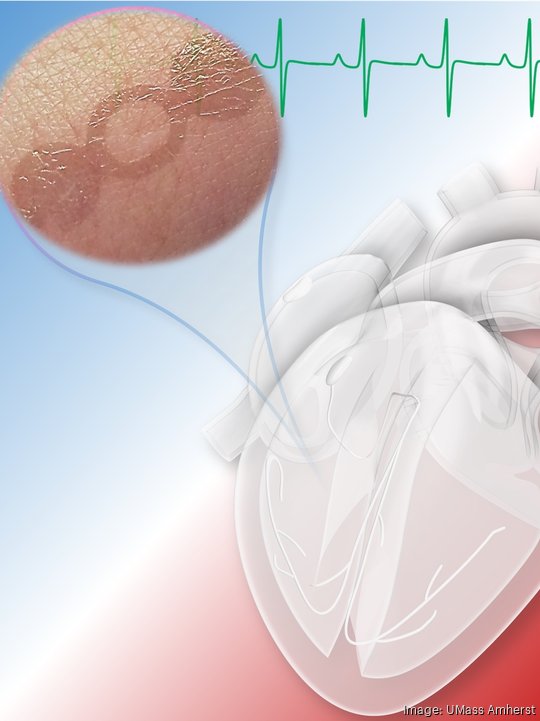
UMass Amherst professor Dmitry Kireev is researching ways to create the heart monitor of the future.
He envisions a world in which consumers could purchase a temporary tattoo-like monitor from the drugstore, apply it to themselves for a day, and get information about their arterial health to better understand their risk for cardiovascular diseases.
“A lot of cardiovascular diseases could be prevented, but we don't have the tools to monitor, measure, and predict the problems before they manifest in diseases,” Kireev said.
With a $231,000, three-year grant from the American Heart Association, Kireev, an assistant professor of biomedical engineering, is working to create a transparent, graphene "tattoo" that can measure biomarkers of arterial health.
The graphene tattoo would be a one-atom thin, electronically conductive material. A challenge of the technology is interconnectivity, and coming up with ways to collect the data that the tattoo monitor could collect. Part of the research is also in developing hybrid circuits that connect to the tattoo, that can then be connected to a phone or other device for viewing and analysis.
The self-applied tattoo would be transparent and could monitor arterial activity for up to a day. Kireev said it could work for conditions including coronary artery disease, sleep apnea, and hypertension. The research builds off of Kireev’s work as a postdoctoral researcher at the University of Texas, Austin, but the consumer product he envisions is likely still years away.
What may be further along in development is an implantable version of the graphene interface that would require physician intervention. In addition to the tattoo device, Kireev is developing an implantable monitor that would use similar graphene-based tools to detect cardiovascular disease earlier than it usually is now.
One benefit is that while most materials used for monitoring are thick, hard, and rigid, the graphene interface is flexible. The implantable device could be applied directly to the heart to assess function, and potentially also deliver electrical stimulation in a similar manner as a pacemaker, without adding bulk or stiffness.







